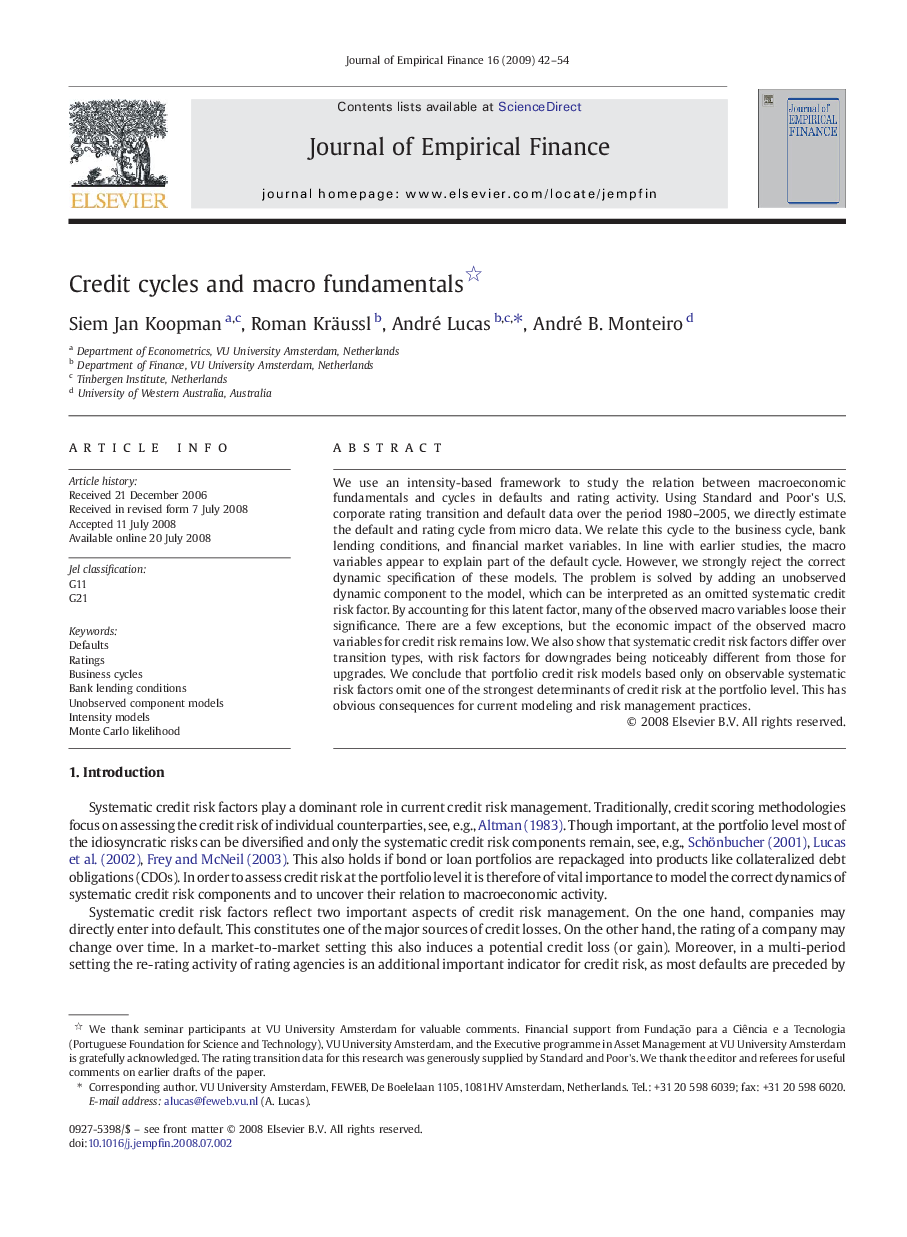| Article ID | Journal | Published Year | Pages | File Type |
|---|---|---|---|---|
| 958644 | Journal of Empirical Finance | 2009 | 13 Pages |
We use an intensity-based framework to study the relation between macroeconomic fundamentals and cycles in defaults and rating activity. Using Standard and Poor's U.S. corporate rating transition and default data over the period 1980–2005, we directly estimate the default and rating cycle from micro data. We relate this cycle to the business cycle, bank lending conditions, and financial market variables. In line with earlier studies, the macro variables appear to explain part of the default cycle. However, we strongly reject the correct dynamic specification of these models. The problem is solved by adding an unobserved dynamic component to the model, which can be interpreted as an omitted systematic credit risk factor. By accounting for this latent factor, many of the observed macro variables loose their significance. There are a few exceptions, but the economic impact of the observed macro variables for credit risk remains low. We also show that systematic credit risk factors differ over transition types, with risk factors for downgrades being noticeably different from those for upgrades. We conclude that portfolio credit risk models based only on observable systematic risk factors omit one of the strongest determinants of credit risk at the portfolio level. This has obvious consequences for current modeling and risk management practices.
